Many water/aquatic plants can be grown in a terrarium or paludarium, submerged or above water. These plants can be included in open or closed terrariums, terrarium ponds (also known as paludariums), closed ecosystems or even planted terrariums for pet reptiles or amphibians.
If you want to add some greenery, diversity, and a livelier ecosystem, look no further than these plants:
Water Terrarium Plants:
I will include a fully aquatic/semi aquatic label on each plant so that you have a better idea of where you can use each (fully submerged, partially submerged, or fully submerged). Also keep in mind that many of these plants have diverse subgroups which you can look into if you want even more variety.
Enjoy!
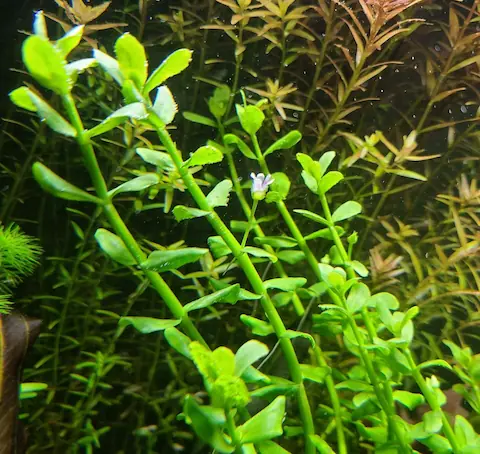
Submerged
The Moneywort (Bacopa) is a popular freshwater aquarium plant. It’s a slow growing water plant, and can be grown both submerged or out of water depending on where you place it – making it an excellent plant for terrariums and paludariums.
The only downside is that it does require some maintenance in terms of special lighting.

Submerged
Java moss is a freshwater plant of the hypnaceae family that is most commonly used as an aquarium carpeting plant as it creates a beautiful natural ambient and feel.
Java moss comes in a variety of greens which are all very furry and dense with lots of small and delicate stems. It’s a slow growing plant (1 to 1 and a half inches per month) .
Java moss is semi aquatic and can be grown both fully submerged and on land.
In terms of care, Java moss is very low maintenance and while its not a requirement it prefers a strong water current and lukewarm water.
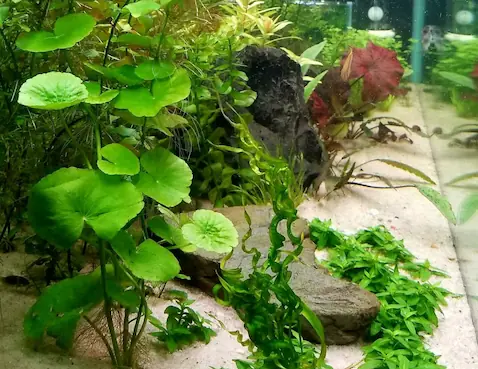
fully in water
The Brazilian Pennywort is a super fast-growing water plant. It has a very delicate aeshtetic, and it’s very easy to care for. It grows in water, and it can be rooted in the ground or left as a floating plant.
When rooted in the ground it will grow towards the surface towards a light source, and as a floating plant it will cover the water surface with its leaves creating a nice green shade.
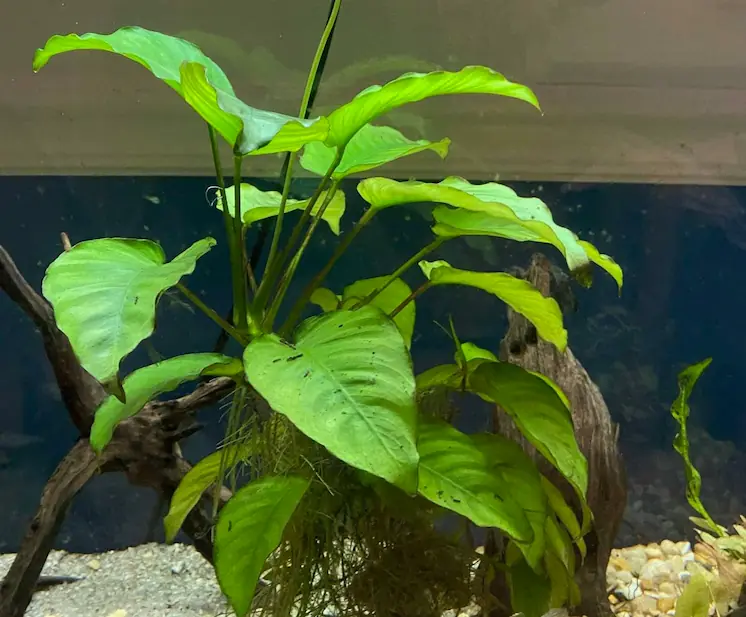
submerged
The Anubias plants are fully aquatic plants that grow underwater, and are typically used in aquariums. They grow attached to gravel, substratem rocks, driftwood, and decorations.
As per aesthetics, the Anubias plants are noted for their thick rhizome, and strong durable vibrant green leaves. The Anubias is also very easy and straightforward to care for,
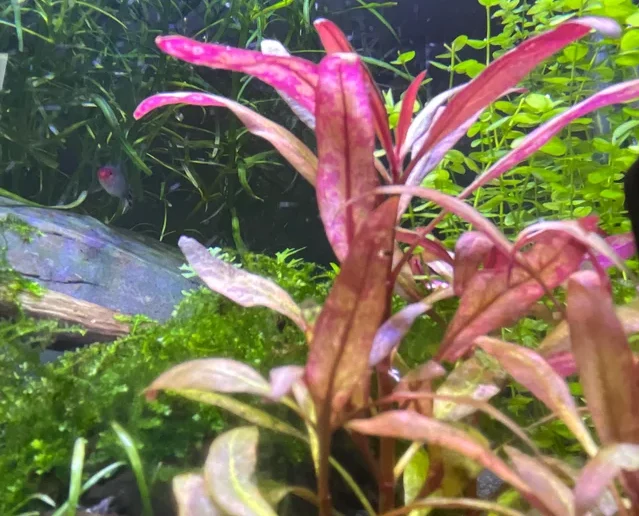
submerged
The Scarlet Temple, aslo known as Alternanthera reineckii, is a popular freshwater fully aquatic plant often used as a foreground (and sometimes as a carpet) because of its unique bright red coloration.
It’s a moderately hard plant to take care of and has a slow growth rate. It requires a temperature of 17 to 28 C and moderate to high lighting.
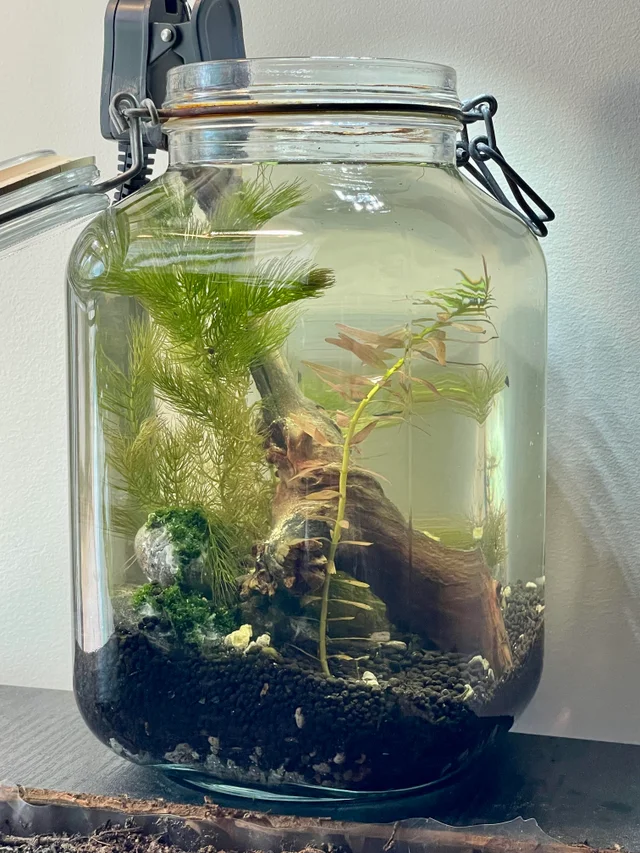
fully emersed
The Dwarf Rotala (Rotala rotundifolia) is a water plant and a very common aquarium plant regarded as a staple, by the book, must have.
It has a beautiful growth pattern and can be planted fully emersed or semi emersed to give your terrarium/paludarium your desired look.
The Dwarf Rotala is also very easy to care for, and has a very rapid growth especially when under good lighting. It reponds great to heavy pruning. Under certain conditions and good lighting it can produce a vibrant pink coloration, and create a colorful cascade in your terrarium pond.
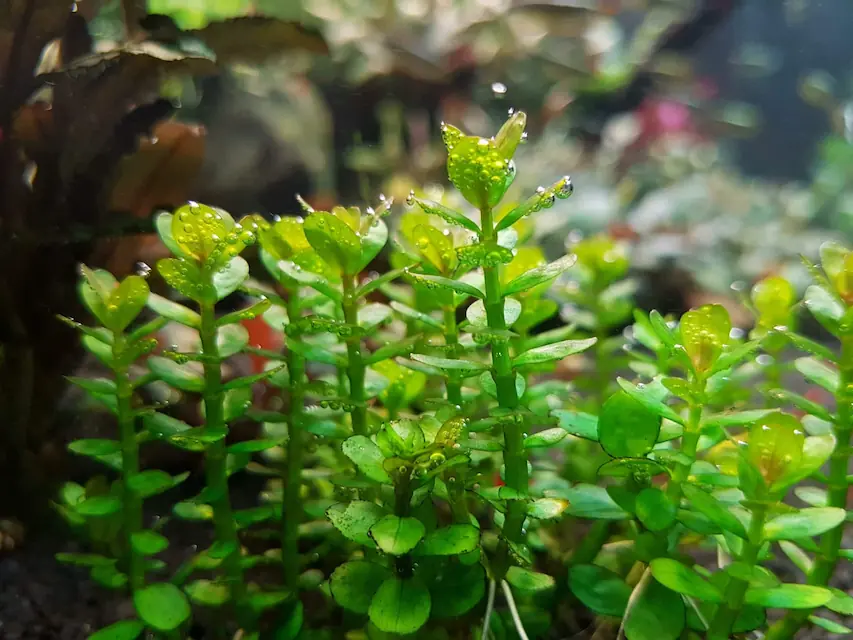
Semi Aquatic
The Indian Toothcup, also known as Rotala Indica, is a aquatic plant that can be grown fully submerged or emersed (below or above water). When emersed the Rotala indica forms prostate stems, and tiny reddish flowers. When submerged it grows upright and has dense leaves, a few branches, and under strong light the top of the shoot becomes reddish.
The Rotala indica is a slow growing water plant with high maintenance demands. While it’s a great plant for a large terrarium/paladurium, and looks exceptional when grown emersed, it can be hard to care for especially for beginners.

aquatic
The American Waterweed is a great aquatic plant for your terrarium/paludarium because it’s a very adaptable, easy to grow plant that can bring a very dark green, thick, and dense look to the pond in your terrarium.
It will provide cover for any animals or insects in your terrarium, and a modest amount of this plant will help the bioactivity immensly.

semi aqatic
The Creeping Staurogyno is a light green compact and hardy water plant that is often used in aquariums, but can also be grown in out of the water making it an excellent plant for paludariums and terrariums.
It has a bushy composition, and will grow horizontally under strong light making a vibrant color on the floor of your terrarium pond/land.
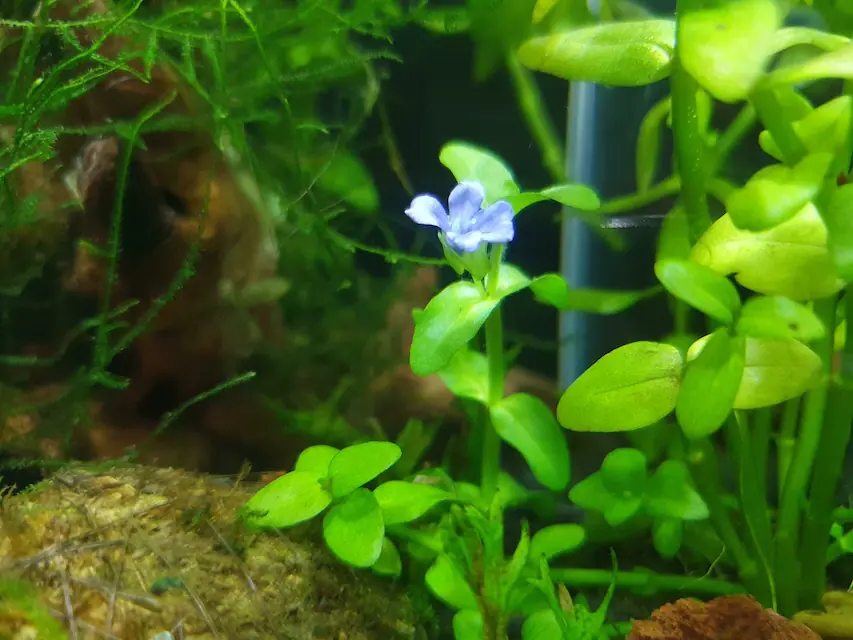
semi aqutaic
The Blue Water Hyssop, also known as a Bacopa caroliniana, is a semi aquatic plant that can be grown in your terrarium pond or on the substrate next to your pond on the ground.
The Blue Wataer Hyssop is an exceptionally beautiful terrarium plant that will bring vibrant light green and blue colors to your biome. It’s also very small making it perfect for smaller terrariums.

semi aquatic
The Liverwort is a semi aquatic plant that can be grown fully submerged or on land. It’s an easy to care for plant, but it needs a lot of water unless its not submerged.
It’s an aesthetically pleasing plant that can add a lot of thickness to the greenery of your terrarium. It grows flat, and can be seen attached to props like logs, trees, rocks, etc. just like moss. It’s very versitile and resilient so it will survive in a variety of terrarium types.
An aesthetically pleasing terrarium/paludarium requires variety, many textures, coloures, shapes, ambients. The water plants on this list are all suitable for terrariums, paludariums, and combining them will result in beautiful scenery.
Looking into the subroups of these plants can open a lot of doors, but these 11 water plants are more than enough to give you a lot of variety to chose from when building and enriching your next terrarium.